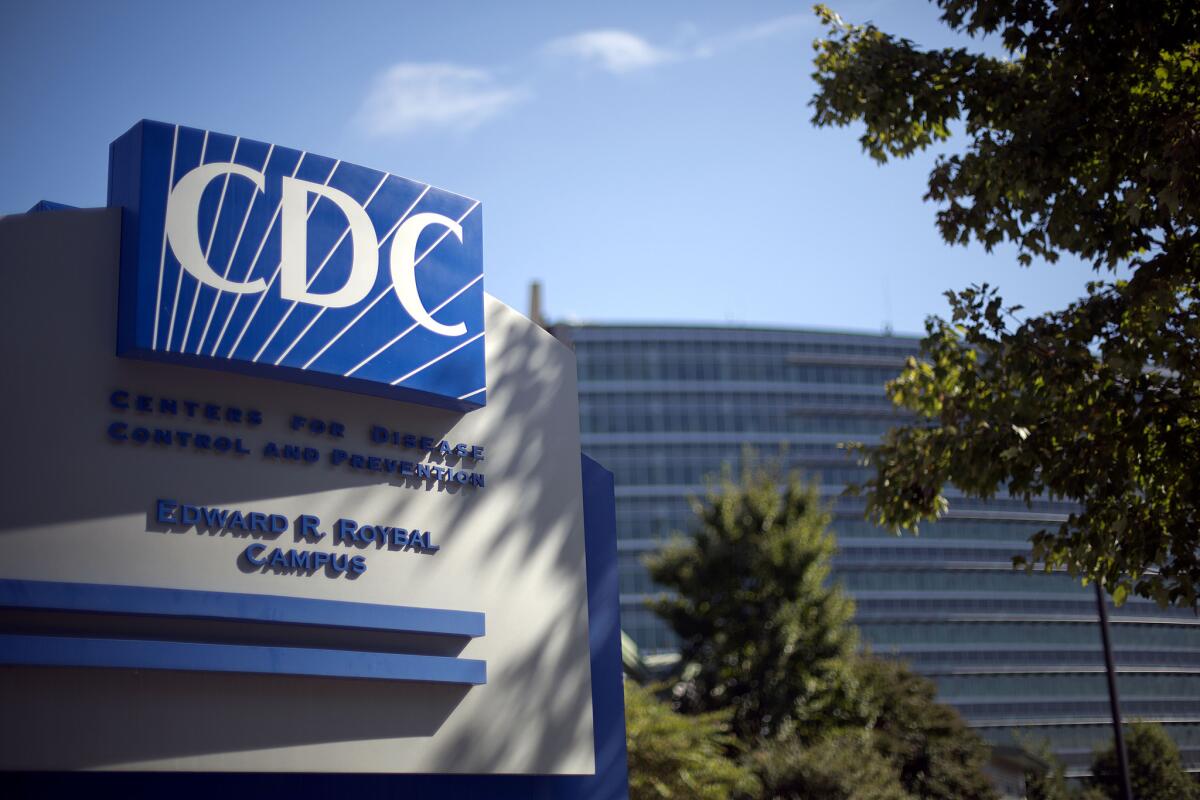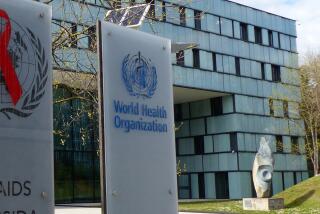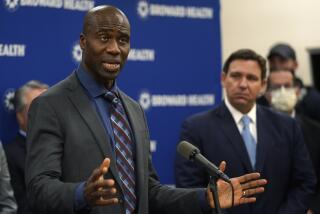The CDC’s incredibly bad coronavirus testing advice

- Share via
It has been a bad week for the credibility of federal health officials, who have backtracked under fire from two ill-considered pandemic directives that were adopted under pressure from the White House.
It started Sunday with the head of the Food and Drug Administration, Dr. Stephen Hahn, grossly overstating the benefits of giving COVID-19 patients blood plasma from people who’d recovered from the coronavirus. To support President Trump’s announcement that the therapy was some sort of amazing breakthrough (it isn’t) and that the FDA would be giving it emergency approval, Hahn had said the treatment would save an additional 35 lives out of 100 patients treated. Other medical experts quickly pointed out, however, that the data showed no such thing, and on Tuesday Hahn publicly apologized.
The following day it was the Centers for Disease Control and Prevention’s turn for embarrassment. A few days earlier the CDC had quietly updated its coronavirus testing guidelines to discourage people who have been exposed to the virus from getting tested, a move roundly criticized by scientists, doctors and virtually every public health expert in the country.
In the ensuing uproar, it was revealed that the recommendation to do less testing came from the politicos on the White House’s coronavirus task force, not the experts at CDC. That’s not hard to believe; Trump has been vocal about wanting to slow down testing because he illogically concludes that the right way to fight the infection is to pretend it isn’t there. The new guidelines appeared to be in keeping with his wishes.
But it’s not in keeping with science or what health officials have been recommending for months as necessary to control the spread of the virus. That’s because, according to the CDC itself, as many as 40% of the people who have COVID-19 don’t have symptoms but can still infect others. Someone who has been in close contact for more than 15 minutes with an infected person should be considered infected too until tested, and it’s astonishingly irresponsible for the CDC to suggest otherwise.
Perhaps hoping to quell the criticism of the president’s coronavirus response at precisely the moment when speakers at the Republican National Convention were praising his coronavirus response, CDC head Dr. Robert Redfield “clarified” the revision on Thursday. He said that maybe people who come into contact should get tested, you know, if they want one or if their doctor or state officials recommend one. Meanwhile, the new and unhelpful guidelines remain on the agency’s website.
These apparently politically directed missteps are not just humiliating for hardworking staffers at the federal agencies charged with leading the pandemic response, they undermine the agencies’ credibility as trusted health and safety sources. Americans are confused enough by all the misinformation and mixed messaging about the coronavirus that’s been emanating from the federal government since the outbreak began. This surely won’t help.
What’s more, the protocols for testing shouldn’t be a source of confusion at this point in the pandemic. Simply put, we started behind and we are still behind. The CDC should be pushing to do more testing — much, much more — because the information the test results provide about where and how the virus is spreading is crucial to safely reopening hard-hit industries, resuming church services and letting students go back to classrooms.
A distinguished bipartisan committee convened by the Rockefeller Foundation concluded recently that the U.S. needs to conduct 30 million diagnostic and screening tests a week if there is to be any hope of controlling the virus until a vaccine is widely available. Testing is the way public health officials identify virus hot spots, trace infections and figure out what activities are putting people at most risk.
Happily, California and other states are ignoring the CDC’s incredibly bad advice on testing. “I don’t agree with the new CDC guidance, period, full stop,” Gov. Gavin Newsom told reporters at a midday briefing on Wednesday. Coincidentally, that’s where he announced a new $1.4-billion initiative to increase coronavirus testing in the state by 150%, from 100,000 a day to 250,000 — and to do it cheaper and get results quicker. This is going to be all the more important when the flu season kicks in this fall and the demand for tests increases.
These are not the first black eyes the CDC or the FDA has received under the Trump administration; remember when the CDC reversed itself on whether it was safe to reopen schools under pressure from the president? But for the sake of all of us, they need to be the last ones.
More to Read
A cure for the common opinion
Get thought-provoking perspectives with our weekly newsletter.
You may occasionally receive promotional content from the Los Angeles Times.






